Weight Loss is a challenging journey. It’s complicated by the fact that every person is different. Their metabolisms differ, their gut bacteria differs, their activities levels differ. There is no single magic pill or template meal plan that works for everyone 100% of the time. There are, however, some universal principles that apply to everyone in Alexandria VA & Springfield VA. We are going to go over the 11 foods you should avoid when attempting to lose weight, and why you should avoid eating them. This 3000-word article break sdown the exceptions and explains the reasons why these 11 foods should be avoided.
Short on time? Please find our 57-second video below that summarizes this whole article.
11 Foods to Avoid for Weight Loss
The Moderation Principle for Weight Loss in 2021.
Alexandria VA, United States
One of the most important rules for weight loss is that quantities matter. People have been successful in losing weight when eating foods on this in moderation. However if you want to maximize the speed of weight loss in Alexandria VA, you are best off avoiding them completely.
Nutrition Coaching & Personal Training Alexandria VA
1. No Pasta for Weight Loss

Pasta is generally three ingredients, flour (often a mixture of all purpose flour and semolina flour), eggs, and water. It has few vitamins and minerals. It’s processed much like sugar causing insulin spikes. Regular pasta is basically empty calories.
To make pasta worse, we often added sauces to it that high in fat (butter, creams, etc.) Fats aren’t bad, but the amount of fat one needs to add to pasta to get it taste right, is generally too much. Sure a little-bit of pesto sauce is fine (it’s mostly olive oil and pine-nuts.) 4 Tablespoons of pesto is too much.
What about Bean Pasta? Sheritaki Pasta? Whole Grain Pasta? Rice Noodles?
Bean and Whole Grain pasta’s aren’t much better than regular pasta. They are better in that they might contain more fiber, and perhaps more minerals. But there is always a better choice than pasta available. Rice Noodles are the same as Semolina based pasta — not good for weight loss.
For my pasta lovers out there, we recommend to our members in our Alexandria VA weight loss center, try using sheritaki pasta. Sheritaki pasta is made from mushrooms. It has nearly no calories, and a similar nutrition profile as compared to the mushrooms from which it was made.
Our members in Springfield VA, also choose spaghetti squash and zoodles (zucchini noodles), because they are excellent pasta substitutes.
2. Avoid Bread for Weight Loss in Alexandria VA

Bread is not good for weight loss. Shocker right? Why is bread so bad? Bread contains gluten which is an allergen for most people. Bread contains refined carbohydrates which cause blood sugar spikes. Bread is low in fiber, but high in carbs. All bread contains some sugar.
The avoid bread rule for weight loss also applies to bread-like foods like: muffins, cereals, pizza, cake, etc.
What about Gluten-Free Bread? Dave’s Bread? Ezekiel Bread? Fiber infused Bread?
To be fair, there is a bread spectrum. All bread is not created equal. Efficient weight loss is all about making better choices. If you are currently eating potato bread or Wonderbread®, switching to Dave’s® or Ezekiel Bread® is an improvement. However, choosing rolled oats, for example, is probably better than Dave’s Bread when it comes to glycemic load. Note, the operative word probably. Individual food intoleralances, gut bacteria, and the other foods you might be eating can change the equation. For this reason, tracking your food with a diet journal is important for recognizing patterns of weight loss. In our Alexandria VA weight loss center, we use an InBody 570 to track weight loss for our members. We compare that weight loss against their diet journals.
3. Coffee Creamers - Weight Loss in Springfield VA
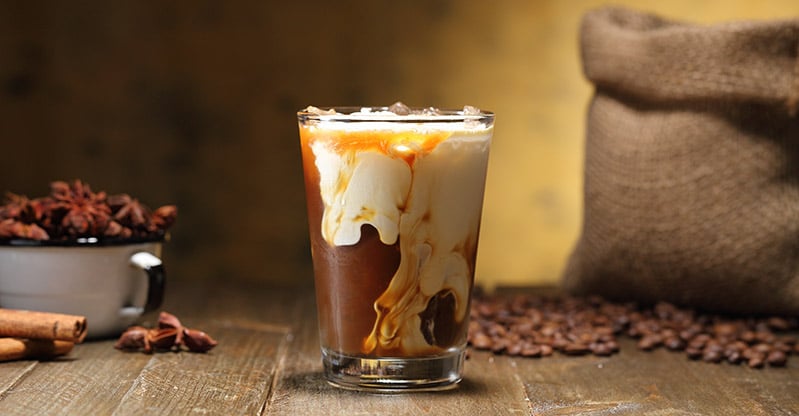
Coffee is fine — coffee creamers not so good? Creamers like International Delight and Coffeemate contain high fructose corn syrup and transfats. Milk based creamers like Whole Milk and Half & Half are better. Just make sure you measure how much you eat. Curious about whether Dairy itself is OK? See the footnote [1. Dairy isn’t great for weight loss. It too has it’s own spectrum and various factors as to better and worse choices. As it applies to coffee, choose the lowest fat milk product you can tolerate.]
What about Fat-Free, Sugar Free Creamers? Rice Milk? Soy Milk? Almond Milk? Coconut Creamer?
Most nutritionist and dietitians agree, complex, synthetic chemicals shouldn’t be ingested on a regular basis. Check the ingredients to see how they made this fat-free / sugar free cream. Cream is fat by it’s very nature. In most cases, we’d rather you stick with a known entity, than ingest something that might cause inflammation or even cancer.
Almond milk in your coffee? I don’t personally like almond milk in coffee, but if you like it go for it. Soy milk? Soy isn’t a great product for weight loss either (many people are allergic). Rice milk is better, but rice milk and soy milk is also has high glycemic carbs.
Coconut Creamer? Pure coconut oil doesn’t have any sugar and it doesn’t create inflammation unless you have a coconut allergy. Check to see what else is in your coconut creamer — it’s the extras that make difference.
4. Chocolate - "Weight Loss" foods to Avoid in Alexandria VA
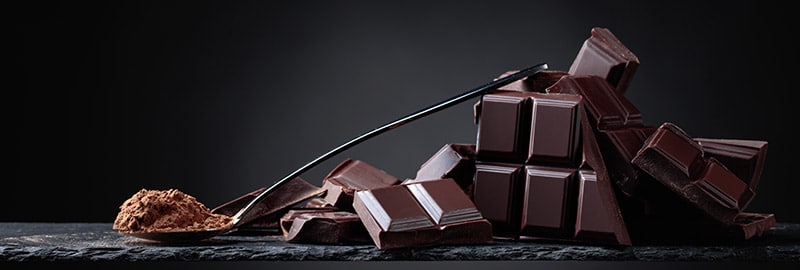
Chocolate is one of those foods that can be tough to avoid if you have a taste for it. If this sounds familiar, you may have also heard that dark chocolate is a healthier alternative to it’s more sugar-laden brethren. In reality, this is only true to a certain extent.
What about Dark Chocolate? Doesn’t it have numerous proven health benefits?
While 80% cacoa dark chocolate does in fact contain some heart healthy antioxidants and fiber, ALL chocolate is made with sugar, cocoa butter, and emulsifiers. This adds unnecessary fats and added sugar to your diet, which as covered earlier is something we want to avoid. Milk chocolate is even worse, containing more sugar and added milkfat than dark chocolate, at the cost of reducing what little nutritive value the chocolate had in the first place. It’s also worth mentioning that chocolate is often not consumed by itself, as its often paired with caramel, peanut butter or nougat. These additions add a tremendous amount of sugar/fat on to an already sugary base and should be avoided if you are trying to lose weight.
How about organic chocolate? Sorry, but other than potentially reducing the pesticides used in cultivating the cacoa beans, organic chocolate still has all of the weight loss pitfalls of normal chocolate. If you want to keep the health benefits with none of the guilt, look for foods that contain the same healthy polyphenols as chocolate, but don’t contain any of the sugar or fat. Theobromine, one of the compounds in chocolate lauded for it’s anti-inflammatory properties, can also be found in foods like the Kola nut, Yerba mate, or simply in a cup of tea.
Bottom Line: All of the healthful components of dark chocolate can be found in other foods without adding unnecessary sugar and saturated fat to your diet.
5. Avoid Chips for your Weight Loss Goals

Chips, particularly potato chips, have already long had a reputation as a “junk food”. However in recent years, an entire market has emerged around “healthy” potato chip alternatives, many of which are just as bad if not worse than their crispy counterparts.
What about baked potato chips? Rice chips? Veggie straws? Popcorn? Corn Chips? And how healthy are pretzels?
Okay, so there are a LOT of different ways people get their crunch on. Fortunately, all of these snack options have similar ingredients which makes evaluating them a bit easier. It comes down to four basic factors:
1. Starch Source
2. Fat Source
3. Sodium & Additives (flavorings)
4. Nutrient Density (serving size/calories per serving)
Let’s start with baked chips. While it is true that generally speaking baking is a healthier cooking method than frying, this isn’t always the case when it comes to chips. While they fare slightly better when it comes to fat and calories, most baked chip varieties contain elevated amounts of sodium to compensate for the lost flavor (this is true of pretzels as well). In addition, baked chips from ANY source (rice, corn, veggie straws, popcorn, flour etc.) have extremely high levels of acrylamide, a carcinogen produced when you heat starch at a high temperature for an extended period of time.
How about corn chips? Surprisingly, although people usually view corn chips as the healthier option, the opposite tends to be true. Per serving, they have similar profiles in terms of sodium, carbs, and fat, but the serving size is drastically different. For Lays, an 160 calorie (1oz) serving covers the whole bag. For Tostitos? The same 1 ounce serving covers just seven chips. Considering these are products that have had millions invested to make them as addictive as possible, the possibility of overeating with corn chips is much higher.
The bottom line is none of these snack are really going to be “good for you”. No matter the base ingredient, all chip varieties are going to contribute excess fat, sodium, and calories to your diet without adding any positive nutritive value to speak of.
6. Avoid Fried Foods for Weight Loss in Springfield VA
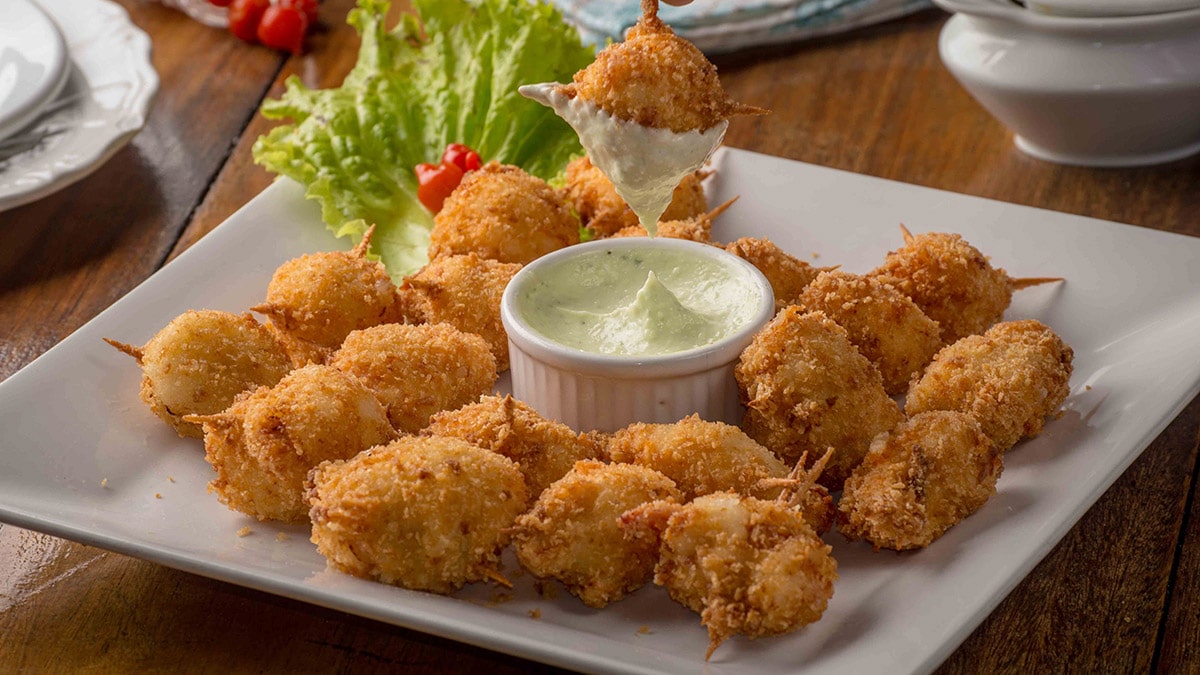
Whenever we discuss the potential health benefits and drawbacks of any food, it’s important to consider the method of preparation. Frying, by definition, is cooking a food in oil or another comparable fat source. All methods of frying food contribute additional fat, but it’s important to remember that not all frying methods are created equal.
What are the differences between Pan-Frying, Deep-Frying, and Sautéing when it comes to health and Weight Loss?
This will likely not come as a surprise, but Deep-Frying is by far the unhealthiest option when it comes to food preparation. There are numerous reasons behind this. For one, submerging a food in high temperature oil not only contributes a ton of additional fat, but depending on the type of oil used can lead to the formation of trans-fats. That leads us to reason number two: Re-using oil. Most of our exposure to fried foods aren’t from DIY french fries and fried chicken, but rather from chain restaurants and commercial sources. When you re-use oil for deep frying (an industry standard practice), its smoke point decreases. Heating an oil past its smoke point releases toxic fumes and free radicals which are then absorbed by the food. These compounds are considered Class 1 Carcinogens and are responsible for the majority of health consequences associated with eating fried foods.
A far better option is home-preparation. Use moderate amount (1-3 teaspoons) of fresh oil with a high omega 3 to omega 6 ratio such as Olive oil or Avocado oil, and sauté on medium heat. Preparing your food at home will give you much better control over the fat and sodium content of your food, as well as eliminating the risk of tainted oil. Your body will thank you for it.
7. Alcohol Stops Weight Loss in its Tracks

While most people are aware that drinking in general is not a healthy habit, few are aware of exactly how caloric their post dinner glass of wine really is. In order to lose weight, you must be in a caloric deficit. However, no matter what your weight loss goals are, its important to get adequate nutrition, which means making the most of the calories you do eat.
What about red wine and spirits? Aren’t they healthier than Beer and Cocktails?
It is certainly possible to incorporate moderate alcohol intake into an overall healthy diet. And it is true that certain sources like red wine and neat whiskey contain some healthful compounds. Especially when compared with beer and cocktails, which add in a ton of extra carbs and sugars. However, when it comes down to weight loss specifically, there is really no good alcoholic option. This is because alcohol itself is extremely caloric. To lose one pound of fat, you need to burn 3,500 calories. One 5 ounce glass of wine (which, be honest, is far less than we’d usually pour!) contains around 125 calories on average. A single shot of vodka? 100 calories. This means that at just 1-2 drinks per day, even with the healthiest sources, you’d wind up with at minimum 700-1,850 extra calories per week with no added nutritional benefit. This makes it extremely difficult to stay in a calorie deficit, and can sabotage your weight loss before it even begins.
8. Avoiding Fruit Juice for Weight Loss in Alexandria VA

I know you’re probably thinking “Hold on, isn’t fruit supposed to be good for you?”. In general, yes, fruit often is a key part of a well rounded diet. This is due to the presence of fiber and polyphenols which can help you reach your micronutrient goals for the day.
Doesn’t fruit juice contain important vitamins and minerals?
In theory, yes, it does. Unfortunately, this process breaks down a bit (pun intended) when it comes to commercial fruit juice. Even when a juice is labeled as “No sugar added, not from concentrate”, the juice is typically stored for such a period of time that it denatures into pure sugar water, which is then renutrified with citric acid and vitamins and shipped for sale. When handled this way, packaged fruit juice is about the nutritional equivalent of drinking a soda along with a vitamin C tablet.
If fruit juice is something you enjoy, consider investing in a juicer to ensure you get the entire fruit while it’s fresh. Or better yet, just eat the fruit itself to gain the full benefit of the fiber and vitamins that mother nature intended.
9. Avoid Processed Meats to Lose Weight
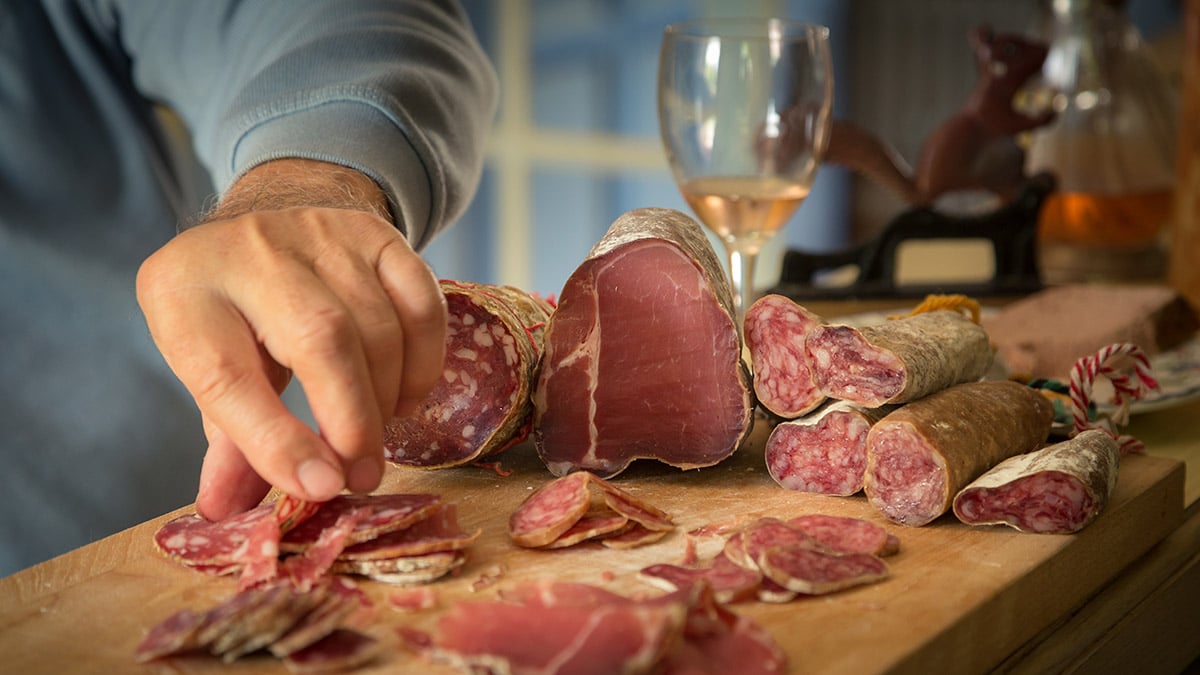
While few are under the illusion that bacon is health food, it’s often misunderstood as to what exactly makes this diner classic one of the least healthy breakfast options out there. There’s a lot of talk around the health benefits of reducing red meat consumption in general, but unfortunately when it comes to bacon (or sausage for that matter) that’s only the tip of the iceberg.
But isn’t it important to get enough protein?
Let’s go to the numbers. Over two-thirds of the calories in bacon come from fat, so calling it a protein source is actually fairly inaccurate. Around half of this fat is saturated fat, making bacon a poor choice as a fat source as well. However, the real nail in the coffin lies in bacon’s status as a processed meat. During the curing process*, bacon is treated with a solution of nitrates/nitrites, salt, and occasionally sugar. Not only does this dramatically increase the sodium content, but when nitrites are exposed to high heat (like they would be in pan frying) they form nitrosamines, widely known to increase the risk of multiple gastric and pulmonary cancers.
*while the process is different, these compounds are still present in uncured bacon.
10. Avoid Desserts for Best Weight Loss Results
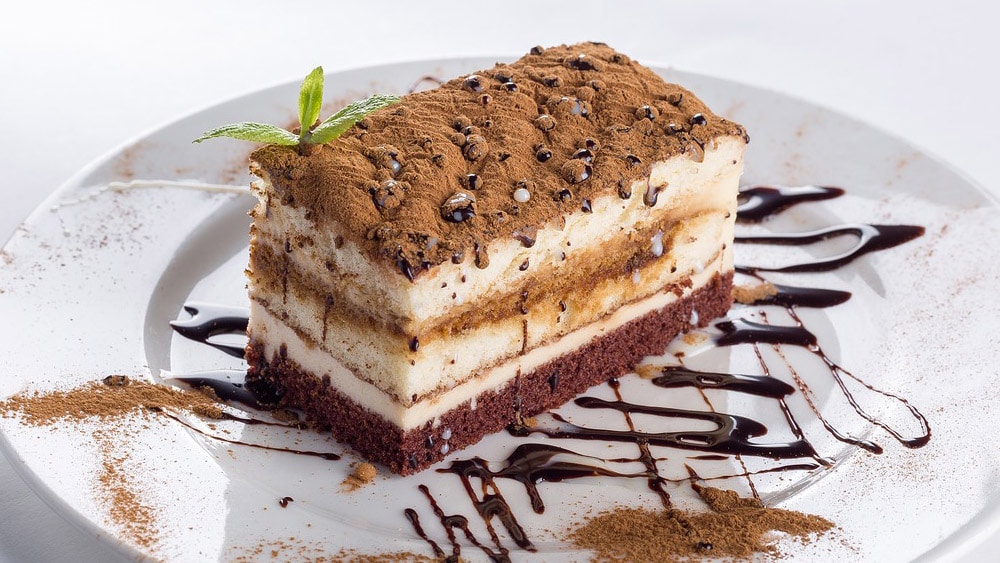
You might be wondering why this would even be on the list. After all, it’s hardly surprising that a nice tiramisu isn’t weight watchers approved. The reason is simple. If you are actively trying to lose weight, desserts and confectionaries are of the menu, cheat day or not. Period, full stop. The base for most confections is flour (refined carb), butter (sat fat), sugar, and egg/egg yolk (more sat fat). And that’s just the breading! Top it with icing, chocolate, etc and the sugar total just keeps climbing. Something like that will spike your blood sugar through the roof and make fat loss nearly impossible, even if you remain in a calorie deficit.
What about cheat days? Can’t you have your cake and eat it too?
First off, I’d argue that cheat days in general sets a bad precedent. To sustain a certain weight, it’s important to create a way of eating that you don’t feel the need to take a break from. And yes, when it comes to maintenance, it’s possible to incorporate sweets in moderate amounts. However, when you are in the process of making a change (such as weight loss) we recommend you stick to healthful foods until you reach your goal. This isn’t to be mean, but rather to help you avoid the all-to-familiar pitfall of going on a diet just to wind up right back where you started from. Stay strong, stay consistent. The cake will still be there when you finish.
11. Soda - Foods to Avoid for Weight Loss
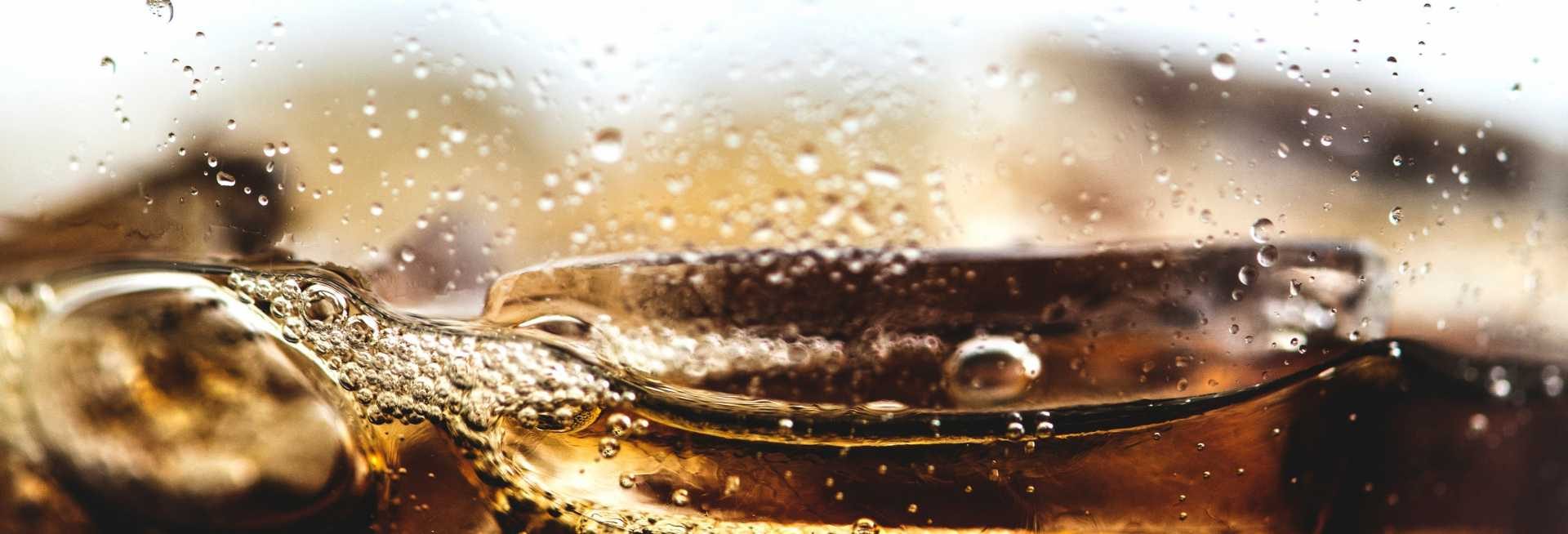
When it comes to soda, there’s two major blindspots. Lack of visibility, and portion size. With granulated sugar, it’s easy to see how much you’re consuming. However when it comes to liquids, it becomes much easier to disguise how much sugar these products actually contain.
Everyone knows soda is sugary. And if you’ve made it this far, you already know exactly why added sugar is to be avoided while losing weight. If you look on the back of any standard soda, it will tell you that per serving it contains around 40 grams of sugar (on average). Okay, that’s a lot. But what exactly does 40 grams of sugar look like?
Okay, so soda has sugar. Everything in moderation, right?
Not exactly. For sugar, “moderation” might entail putting a sugar packet in your coffee. However an entire sugar packet only contains 2-4 grams of sugar. I think most people would agree that there’s nothing “moderate” about putting 10-20 packets of sugar into your coffee. In fact, by any reasonable standard, that would be considered excessive. And those figures only apply to the standard U.S. serving for soda, which is 12 ounces.
This leads us to the second problem, portion size. At almost every chain restaurant in the U.S., the size of a small drink is 20 ounces, and larges range from 36-42 ounces. This means the sugar content of these drinks clocks in at from 66 grams for a small to a whopping 140 grams for the 42 ounce large. In sugar packet terms, this would mean 16-32 packets of sugar for a small, up to an astonishing 35-70 packets of sugar in a large.
Meal Replacement Drinks
If you are short on time, and can’t prep your meals in advance, there are many companies that offer meal replacement drinks. Barbend recently published an article where they reviewed the top 12 meal replacement drinks. Definitely worth a read.





good article [email protected]